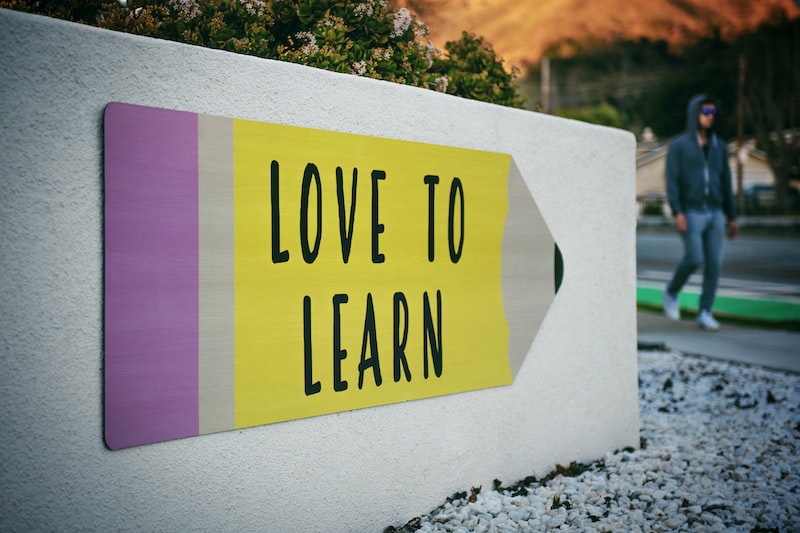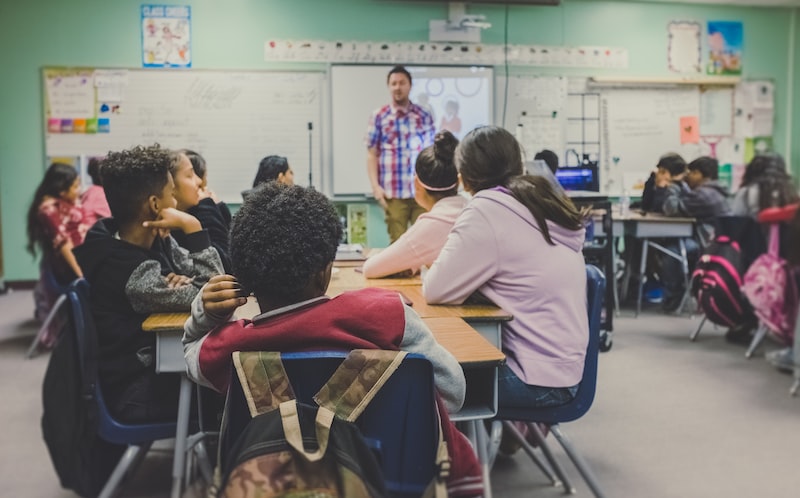The future of education is an exciting and ever-evolving landscape. As we navigate the 21st century, emerging trends and paradigms are reshaping the way we learn and teach. From technological advancements to innovative teaching methodologies, the future of education holds immense potential to revolutionize traditional educational systems.
One of the key trends shaping the future of education is the integration of technology in classrooms. With the advent of digital tools and online platforms, educators can create immersive learning experiences that cater to diverse learning styles. Virtual reality (VR) and augmented reality (AR) technologies, for instance, offer students the opportunity to explore concepts in a hands-on and interactive manner, transcending the limitations of traditional textbooks.
Another significant trend is personalized and adaptive learning. Every student has unique strengths, weaknesses, and learning preferences. Recognizing this, educators are increasingly adopting personalized learning approaches that tailor instruction to individual needs. Advanced analytics and machine learning algorithms enable educators to track students’ progress in real time and provide targeted interventions, fostering a more effective and engaging learning experience.
Furthermore, collaborative learning and project-based pedagogies are gaining momentum. Education is no longer confined to the four walls of a classroom; it extends beyond to incorporate global collaborations and real-world problem-solving. Students are encouraged to work together, exchange ideas, and develop critical thinking skills through teamwork. This approach prepares them for the complexities of the modern workforce, where collaboration and adaptability are highly valued.
In addition, there is a growing emphasis on lifelong learning. The rapid pace of technological advancements necessitates continuous skill development. Educational institutions are recognizing the importance of equipping students with not just academic knowledge but also the ability to learn and adapt throughout their lives. Lifelong learning encourages individuals to embrace curiosity, cultivate a growth mindset, and pursue ongoing personal and professional development.
In conclusion, the future of education is characterized by transformative trends and paradigms. Technology, personalized learning, collaboration, and lifelong learning are reshaping the educational landscape. By embracing these emerging trends, we can create an educational system that prepares students to thrive in a rapidly changing world. The possibilities are limitless, and with each new innovation, education takes a step forward into an exciting future of endless opportunities.
Blended and Online Learning Models
Have you ever wondered how technology is revolutionizing the way we learn? Blended and online learning models have emerged as powerful tools in the realm of education, offering students new opportunities to enhance their knowledge and skills. In this article, we will delve into the world of blended and online learning, exploring their benefits and potential impact on the future of education.
Blended learning combines traditional face-to-face instruction with online components, creating a dynamic learning experience that caters to individual student needs. Imagine having the flexibility to access course materials and engage in interactive activities anytime, anywhere. Blended learning provides precisely that. It seamlessly integrates in-person classroom interactions with virtual platforms, promoting active participation and self-paced learning. This innovative approach empowers students to take ownership of their education while fostering collaboration and critical thinking skills.
On the other hand, online learning takes the concept of flexibility to new heights. With online courses, the entire learning experience occurs in the digital realm. Students can access lectures, assignments, and resources through web-based platforms, tailoring their studies to fit their unique schedules. Imagine being able to pursue your educational goals without geographical constraints. Online learning offers this freedom, enabling individuals from all walks of life to acquire knowledge and earn qualifications from top institutions around the globe.
The benefits of blended and online learning models are manifold. Firstly, they provide personalized learning experiences. Students can progress at their own pace, revisiting concepts or accelerating their learning journey as needed. This individualized approach enhances comprehension and retention of information. Moreover, blended and online learning foster digital literacy, equipping students with essential 21st-century skills. Proficiency in navigating virtual platforms and utilizing digital tools becomes second nature, preparing learners for the demands of our increasingly interconnected world.
In conclusion, blended and online learning models are transforming education as we know it. The combination of traditional instruction and online elements creates a powerful learning environment that caters to the diverse needs of students. Whether through blending face-to-face interactions with virtual components or engaging solely in online courses, learners can now access education on their own terms. As technology advances and connectivity improves, the impact of blended and online learning will only continue to grow, shaping the future of education for generations to come.

(Word count: 331)
Gamification and Immersive Experiences
Have you ever wondered how some companies manage to create such captivating experiences for their customers, leaving them in awe and wanting more? It’s no magic trick or coincidence—it’s gamification and immersive experiences at work. In this article, we’ll explore the power of these techniques and how they can revolutionize engagement.
Imagine stepping into a different world—a world where every action you take has consequences and rewards. That’s what gamification is all about. By applying game elements like challenges, achievements, and competition to non-game contexts, businesses are able to capture the attention and enthusiasm of their audience. It’s like turning mundane tasks into exciting quests!
Through gamification, companies can motivate customers to actively participate in their brand journey. Whether it’s completing tasks, earning points, or unlocking exclusive content, gamified experiences provide a sense of achievement and progression. This not only keeps users engaged but also fosters loyalty and boosts customer satisfaction.
Now, let’s dive into immersive experiences. Picture yourself wearing a virtual reality headset, transported to a whole new dimension where you can interact with a virtual environment. Immersive experiences go beyond traditional marketing methods by immersing individuals in a simulated reality that feels incredibly real.
With immersive experiences, brands can forge deep emotional connections with their customers. By allowing people to explore, personalize, and interact with products or services in a virtual space, businesses can create memorable moments that leave lasting impressions. These experiences tap into our senses, making us feel like active participants rather than passive observers.
But what makes gamification and immersive experiences so powerful when combined? Well, it’s like combining the best of both worlds. Gamification injects fun and motivation into the immersive experience, while immersion amplifies the impact of gamification. The result is an engagement powerhouse that captivates and resonates with audiences on a profound level.
In conclusion, gamification and immersive experiences have the potential to revolutionize customer engagement. By infusing elements of gaming and creating virtual worlds that stimulate our senses, businesses can create unforgettable experiences that keep customers coming back for more. So, if you’re ready to take your brand to new heights, consider harnessing the power of gamification and immersion—it’s time to amaze and impact your audience like never before!
Artificial Intelligence and Machine Learning in Education
Are you curious about the impact of Artificial Intelligence (AI) and Machine Learning (ML) in the field of education? Let’s delve into this fascinating topic and explore how these cutting-edge technologies are revolutionizing the way we learn.
Imagine having a personal tutor who understands your unique learning style, adapts to your pace, and provides tailored guidance. That’s where AI and ML come into play. These intelligent systems can analyze vast amounts of data, identify patterns, and customize learning experiences for individual students. It’s like having an attentive mentor available 24/7.
One of the key applications of AI and ML in education is personalized learning. By leveraging advanced algorithms, educational platforms can assess a student’s strengths and weaknesses, identify knowledge gaps, and deliver targeted content. This individualized approach ensures that students receive the right materials and support at the right time, maximizing their learning potential.
Moreover, AI-powered virtual assistants are transforming the classroom experience. These digital helpers can answer questions, provide explanations, and offer real-time feedback. Students can interact with these virtual tutors, clarifying doubts and deepening their understanding of complex concepts. This interactive learning environment encourages active participation and boosts engagement.
Another exciting development is the use of AI and ML in grading and assessment. Traditional evaluation methods often rely on subjective judgment and can be time-consuming. With AI, essays and assignments can be automatically evaluated, providing instant feedback to students. This not only saves time for educators but also enables students to track their progress and make improvements promptly.
Beyond personalized learning and assessment, AI and ML are enhancing educational research. They can analyze vast amounts of educational data, identifying trends and insights that inform curriculum development and policy-making. These technologies enable educators to make data-driven decisions, ensuring that educational strategies align with the evolving needs of students.
In conclusion, Artificial Intelligence and Machine Learning are revolutionizing education by enabling personalized learning experiences, providing virtual assistance, automating assessments, and driving educational research. As these technologies continue to advance, the future of education looks promising, with learners benefiting from customized instruction, increased engagement, and improved outcomes. Embracing AI and ML in education opens up a world of possibilities, paving the way for a more effective and inclusive learning environment.
Competency-based Education and Skill Development
Are you ready to embark on a transformative journey of education and skill development? Competency-based education offers a revolutionary approach that focuses on acquiring practical skills and knowledge. Gone are the days when traditional education solely relied on theoretical concepts and exams. With competency-based education, the emphasis shifts to mastering real-world competencies that prepare individuals for success in their chosen fields.

So, what exactly is competency-based education? Unlike conventional educational models, competency-based education centers around specific skills and abilities. It considers each learner as unique, acknowledging that individuals have different starting points and learning speeds. The focus is on personalized learning, allowing students to progress at their own pace and demonstrate mastery of competencies before advancing further.
Imagine a classroom where students actively engage in hands-on experiences, problem-solving tasks, and projects relevant to their desired professions. This approach ensures that learning is not confined within the walls of a classroom but extends to real-world applications. Students develop critical thinking, collaboration, and communication skills, which are vital for success in today’s rapidly evolving job market.
Competency-based education also promotes a shift from grades to mastery. Instead of simply striving for good grades, learners strive to fully grasp and apply concepts effectively. They are assessed based on their ability to demonstrate mastery of specific skills and knowledge. This evaluation method provides a more accurate representation of an individual’s capabilities, enabling employers to identify competent candidates who possess the necessary skills to excel in their respective roles.
Think of competency-based education as a roadmap to success, guiding you towards achieving your career goals. It equips you with practical skills that employers value, enhancing your employability and opening doors to exciting opportunities. Whether you’re interested in technology, healthcare, business, or any other field, competency-based education prepares you to hit the ground running.
Embrace the power of competency-based education, where you are the driver of your own learning journey. Unlock your potential, acquire sought-after skills, and become a valuable asset in today’s competitive job market. It’s time to step into the future of education and skill development—let competency-based education empower you to reach new heights!
Global Collaboration and Cross-cultural Learning
In today’s interconnected world, global collaboration and cross-cultural learning have become vital for individuals, businesses, and societies to thrive. The ability to work together across borders, cultures, and languages has opened up new opportunities and challenges that require a deep understanding of diverse perspectives. In this article, we will delve into the significance of global collaboration and cross-cultural learning, exploring how it can foster innovation, enhance communication, and promote mutual understanding.
One of the key benefits of global collaboration is the exchange of ideas and knowledge from different cultural backgrounds. When individuals from diverse cultures come together, their unique experiences and viewpoints combine, leading to innovative solutions to complex problems. This collaborative approach encourages creativity and out-of-the-box thinking, as people with different cultural lenses offer fresh insights that challenge conventional wisdom.
Moreover, global collaboration fosters effective communication skills in a multicultural context. Working with people from different parts of the world requires active listening, empathy, and adaptability. Through cross-cultural interactions, individuals learn to navigate language barriers, understand nonverbal cues, and respect different communication styles. These skills not only enhance professional relationships but also facilitate personal growth by broadening one’s perspective on the world.
Beyond innovation and communication, global collaboration and cross-cultural learning cultivate mutual understanding among diverse communities. By engaging with individuals from different cultures, stereotypes and prejudices can be broken down, fostering tolerance and appreciation for diversity. This promotes a more inclusive and harmonious society, where people embrace and celebrate each other’s differences.
In conclusion, global collaboration and cross-cultural learning are essential in our increasingly interconnected world. They drive innovation, improve communication skills, and foster mutual understanding. Embracing these practices empowers individuals and organizations to navigate the complexities of our globalized society successfully. By embracing diversity and working together across borders, we can create a brighter and more prosperous future for all.
Future Skills and Workforce Preparedness
In today’s fast-paced world, the rapid advancement of technology has brought about significant changes in the job market. As automation, artificial intelligence, and machine learning continue to evolve, it is crucial for individuals to develop future skills and be prepared for the workforce of tomorrow. Gone are the days when traditional skills alone were sufficient; now, adaptability and a growth mindset are paramount.
So, what are future skills? These are the abilities and competencies that will enable individuals to navigate the dynamic workplace landscape effectively. One crucial skill is digital literacy. With nearly every aspect of our lives becoming digitized, having a solid understanding of technology is no longer optional. From basic computer proficiency to advanced data analysis, being digitally savvy is essential for success in the modern workplace.
Moreover, critical thinking and problem-solving skills are becoming increasingly vital. As automation takes over routine tasks, employers seek individuals who can analyze complex situations, think critically, and propose innovative solutions. The ability to adapt to new circumstances, reframe challenges as opportunities, and find creative ways to overcome obstacles is invaluable in an ever-changing world.
Another crucial aspect of future skills is communication and collaboration. As work becomes more globalized and teams span across borders, effective communication and collaboration are essential. Strong interpersonal skills, the ability to work in diverse teams, and excellent written and verbal communication skills all contribute to successful collaboration and productivity.
Additionally, lifelong learning has become a necessity. In a rapidly evolving world, constant upskilling and reskilling are critical for staying relevant. Individuals need to embrace a growth mindset, seeking out new knowledge and acquiring new skills to remain competitive. Continuous learning not only enhances employability but also fosters personal and professional growth.
To thrive in the future workforce, individuals must proactively develop these future skills. This requires commitment, dedication, and a proactive approach to learning. By focusing on digital literacy, critical thinking, communication and collaboration, and embracing lifelong learning, individuals can navigate the ever-changing landscape with confidence, adaptability, and success.
The future is full of possibilities, and those who invest in developing their future skills will be better equipped to seize opportunities and thrive in an increasingly dynamic and competitive job market. So, are you ready to embrace the future and equip yourself with the skills needed for tomorrow’s workforce?












Leave a Reply